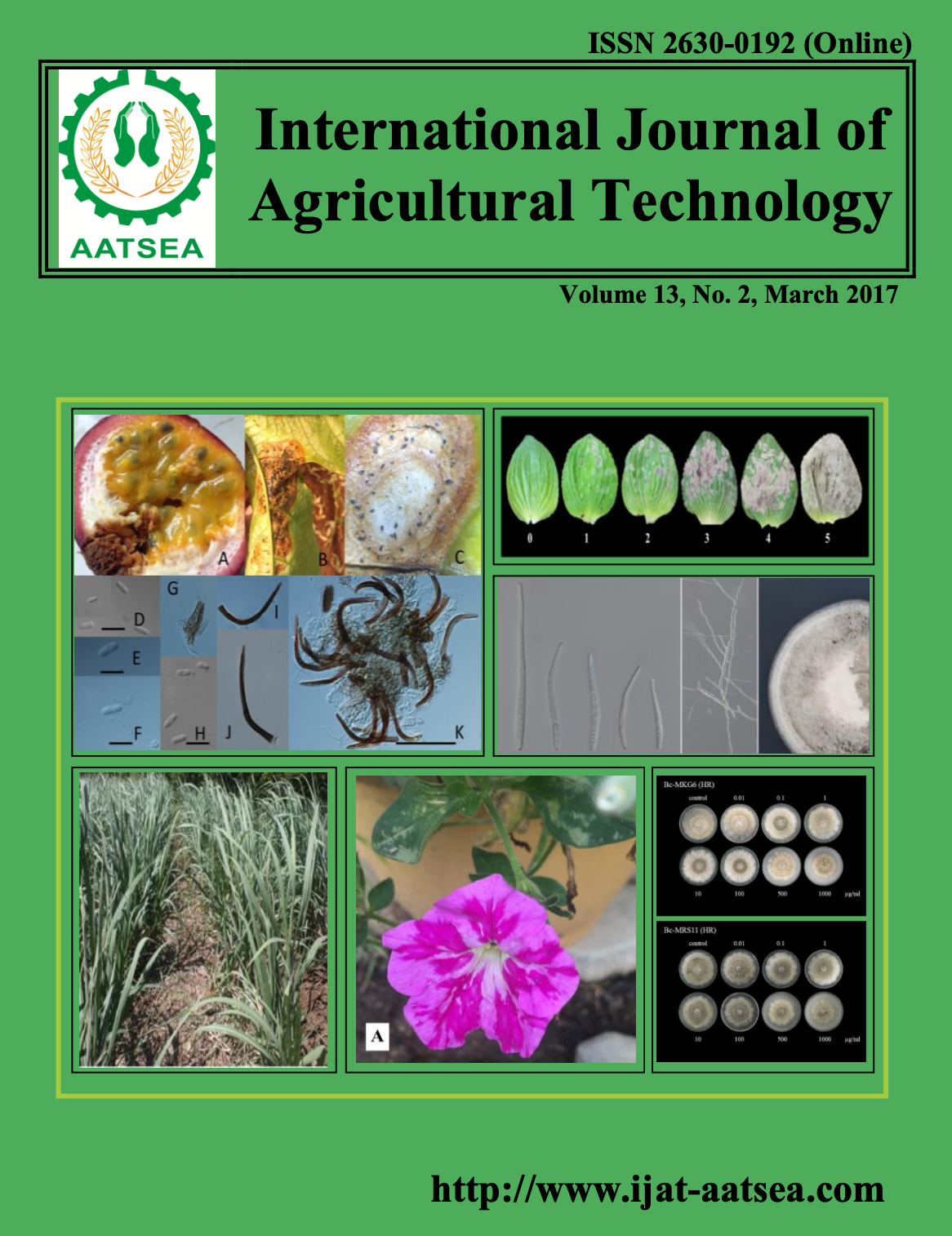Nutrient dynamics evaluation in utilization of household greenhouse module for hydroponic production of mint (Mentha arvensis L.)
Main Article Content
Abstract
Hydroponic nutrients are the basis behind the success of any indoor garden. By focusing on the two most important solution factors - nutrient balance and nutrient concentration, the hydroponic solution will give maximum growth and yields. Hence, this study looked at the dynamics of nutrient solutions for mint production, in terms of location and time, in a household hydroponics system module. The systems’ environment parameters such as pH, temperature, electrical conductivity and total dissolved oxygen were also monitored and their effects to nutrient dynamics had been examined. Based on the data gathered, nutrients in a household set up hydroponics varied as they traveled from the tank, growing tubes, raft cultures until they reached the collection point. Likewise, changes in nutrients solutions happened in time. Moreover, with regard to results in nutrient dynamics in different collection points, it was found out that it was only during the first and third weeks when the highest nutrient concentrations were observed in control point. In week 2 and week 4, highest concentration values were seen in collection points 2 and 1, respectively. In terms of nutrient dynamics at different times there were no significant difference on the following nutrient concentrations: copper (Cu), iron (Fe) and manganese (Mn) while significant difference from Weeks 1 to 4 was observed in calcium (Ca), magnesium (Mg) and nitrate nitrogen (NO3-N). The presence of 11 common nutrient deficiencies observed in the hydroponics production of mint could be attributed to deficiencies in total nitrogen, potassium, phosphorous and iron.
Article Details

This work is licensed under a Creative Commons Attribution-NonCommercial-NoDerivatives 4.0 International License.
References
Abe, R. and Ohtani, K. (2012). An etnobotanical study of medicinal plants and traditional therapies on Batan Island, the Philippines. Journal of Ethnopharmacology 554-565.
Bellona Foundation (2009). The sahara forest project. Retrieved from saharaforestproject.com.
Jones, B. J. (2005). Hydroponics: A practical guide for the soiless grower. Florida: CRC Press.
Krstolic, J. L., and Hayes, D. C. (2014). Water-Quality Synoptic Sampling, July 1999: North Fork Shenndoah River, Virginia. Virginia: US Geological Survey.
Silva, D. S., Junior, M. D., and Viegas, I. M. (2014). Growth and visual symptoms of nutrient deficiencies in young Mentha piperita plants. Journal of Food, Agriculture and Environment 12:292-296.
Smith, H. N. (2013). Hydroponics Vegetable Production. Retrieved from http://hydroponicseducation.com/wp-content/uploads/2013/08/Hydroponic-Education-Herbs.pdf.
United Nations. (2011). Retrieved from http://www.un.org/en/development/desa/population/-publications/pdf/popfacts/PopFacts_2011-2.pdf.


